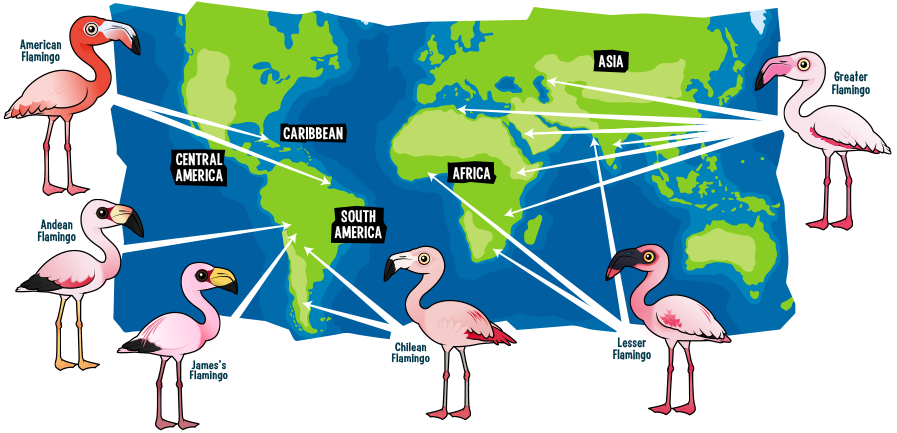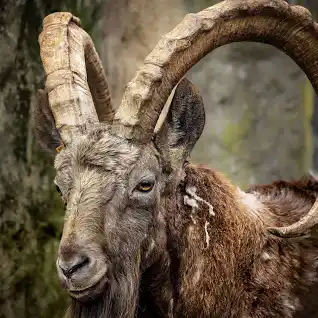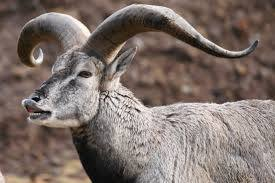Important Facts For Prelims
Flamingos, Himalayan Ibex and Blue Sheep
- 29 May 2024
- 4 min read
Why in News?
Recently, around 39 Flamingos were killed in a collision event with an aircraft landing at the Mumbai airport.
- Since flamingos are a protected species under the Wildlife Protection Act (1972), the rescuers handed over the carcasses of the flamingos to the forest department conducting the necropsy.
What are the Key Facts About the Flamingos?
- There are 6 flamingo species found around the world namely American Flamingo, Andean Flamingo, Chilean Flamingo, Greater Flamingo, James's Flamingo , and Lesser Flamingo.
- Greater Flamingo:
- About:
- It is the largest and most widespread flamingo species.
- These are the state bird of Gujarat.
- They are categorised as "least concern (LC)" in the IUCN Red List of Threatened Species.
- These are found in various regions of Africa, the southeastern parts of Asia as well as southern Europe.
- In Asia, their distribution range includes the coastal areas of India and Pakistan.
- Northern populations of these birds often migrate to warm regions during winter due to various reasons like scarcity of food, water-level changes, and competition within a single colony.
- Characteristics:
- These species form monogamous pairs which means each pair remains together for their entire lives.
- They get their characteristic pink colour from their diet of brine shrimps and algae available in the coastal wetlands. The flamingoes are the indicators of a healthy coastal environment.
- These omnivorous species feed on molluscs, crustaceans, insects, crabs, worms and small fishes. Their diet also consists of various plant materials such as algae, grass, decaying leaves, and shoots.
- These birds prefer saltwater lagoons in coastal areas. They also inhabit large alkaline and saline lakes.
- About:
- Migration Pattern of Flamingo in India:
- Experts note that nearly 100,000 to 150,000 flamingos migrate from Gujarat (including Kutch and Bhavnagar) and other scattered locations to Mumbai each November in search of food.
- Upon arrival, they establish themselves in the Thane Creek area (breeding grounds for Flamingos).
Survey of Himalayan Ibex and Blue Sheep
- Wildlife authorities in Himachal Pradesh’s Lahaul & Spiti district are conducting surveys to estimate the population of blue sheep and Himalayan ibex, the main prey of snow leopards.
- Snow leopards, classified as ‘vulnerable’ under the IUCN Red List have been increasingly sighted due to the growing population of blue sheep and Himalayan ibex.
| Features |
Himalayan Ibex |
Blue Sheep (Bharal) |
| Charecterstics |
|
|
| Distribution |
|
|
| Conservation Status |
|
|
UPSC Civil Services Examination, Previous Year Questions (PYQs)
Prelims
Q. Consider the following fauna: (2023)
- Lion-tailed Macaque
- Malabar Civet
- Sambar Deer
How many of the above are generally nocturnal or most active after sunset?
(a) Only one
(b) Only two
(c) All three
(d) None
Ans: (a)







